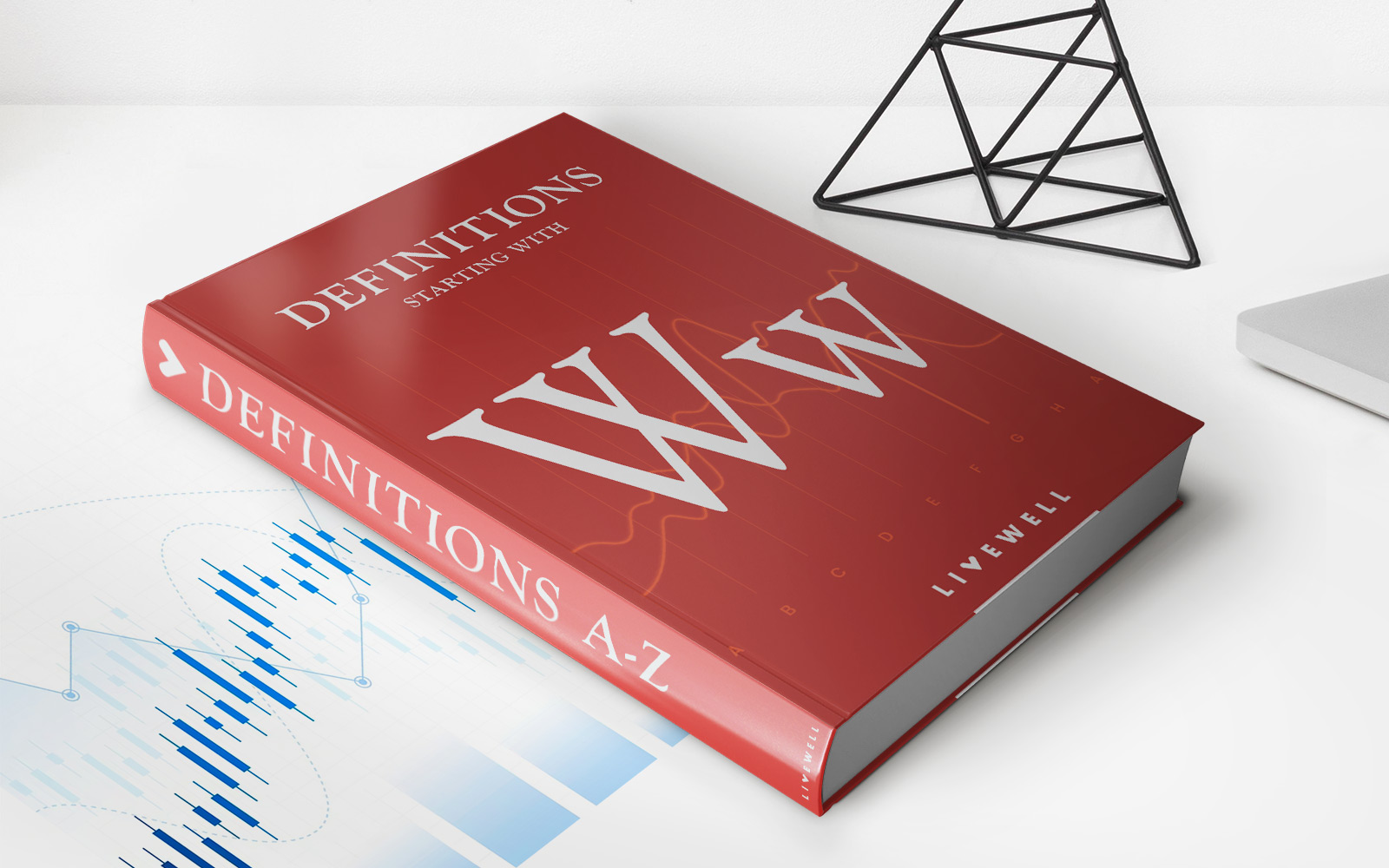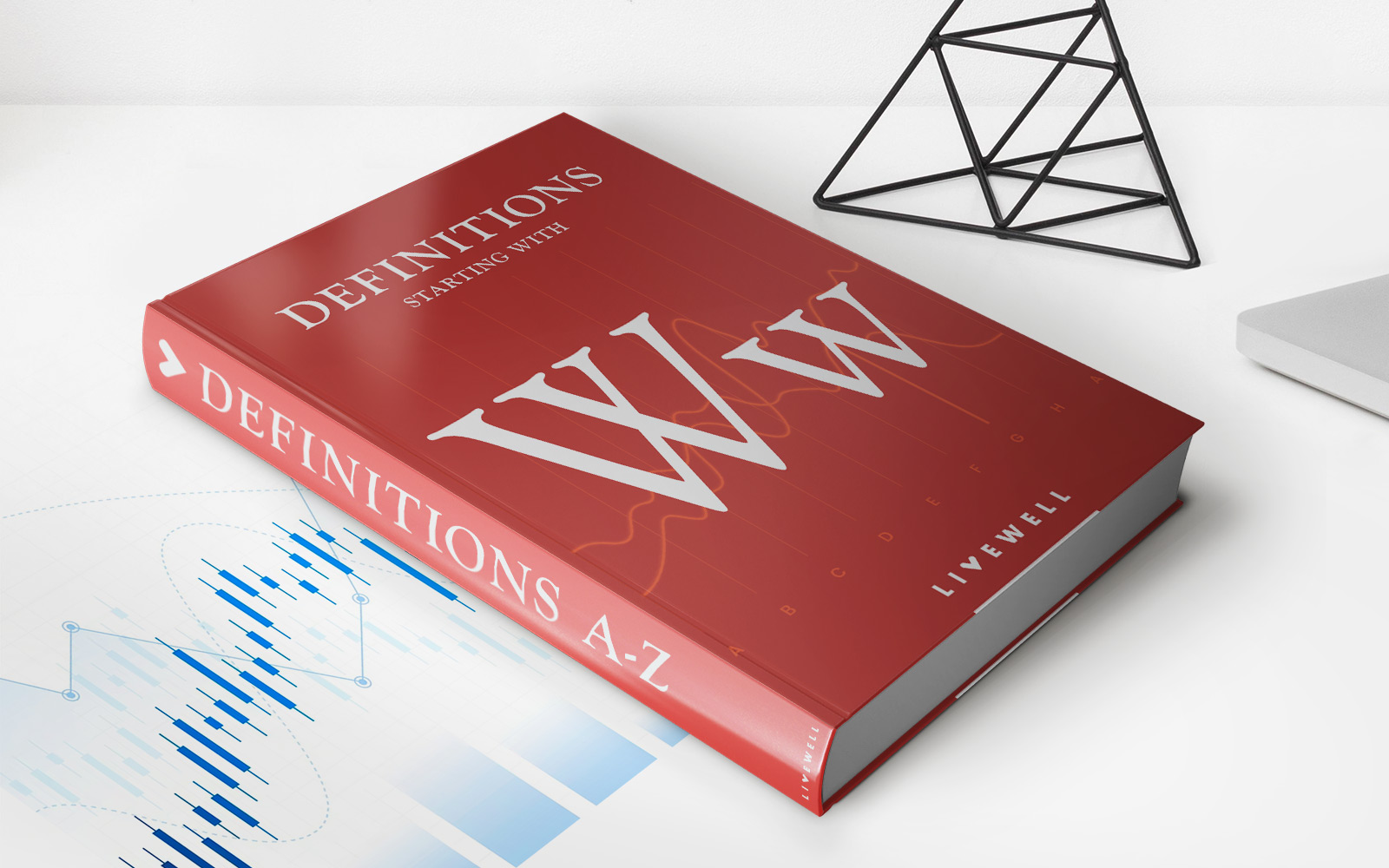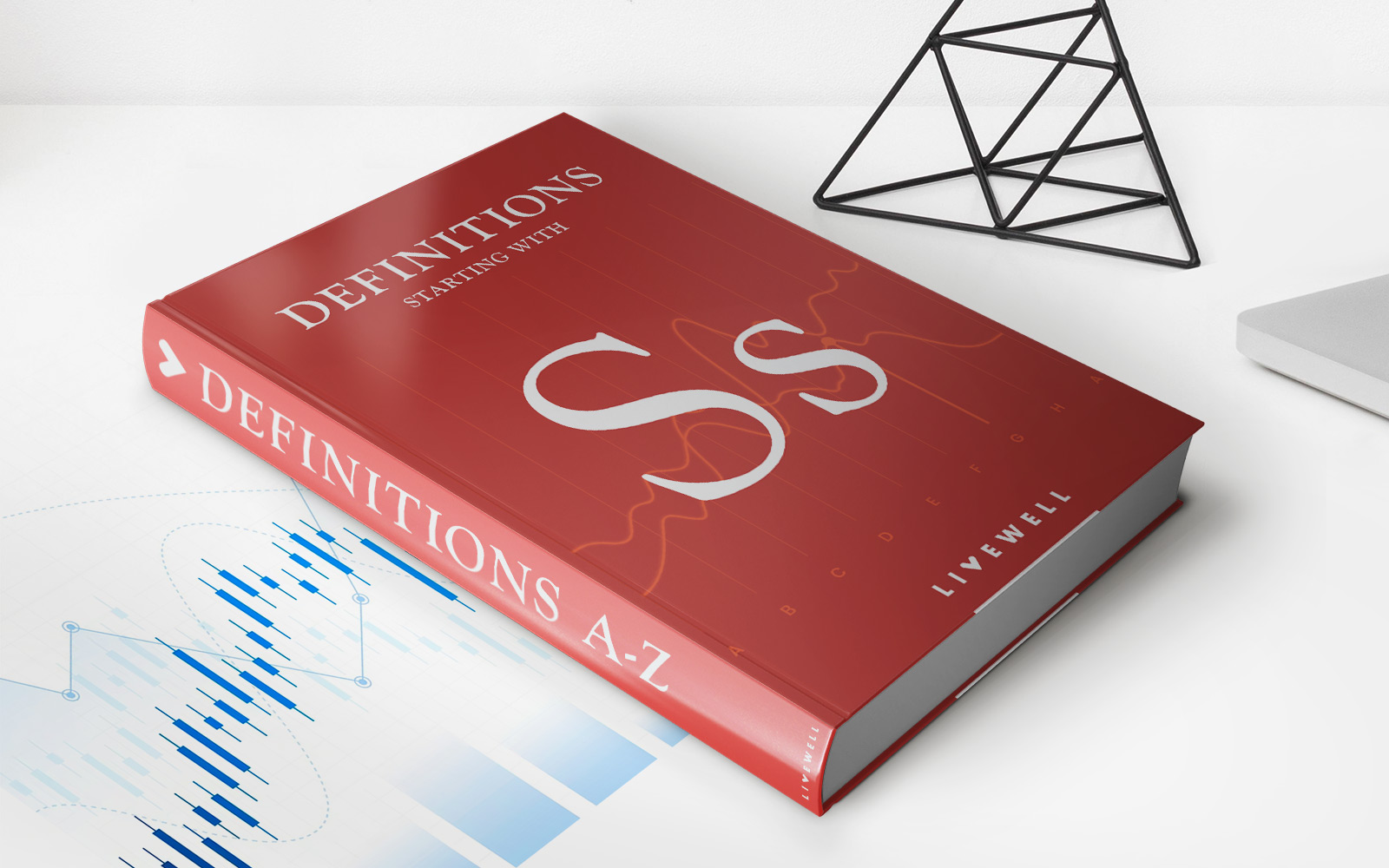

Finance
What Is Waiver Of Premium On Life Insurance
Modified: February 21, 2024
Learn about the finance aspect of life insurance with a waiver of premium, a valuable feature that could save you from paying premiums in case of disability or illness.
(Many of the links in this article redirect to a specific reviewed product. Your purchase of these products through affiliate links helps to generate commission for LiveWell, at no extra cost. Learn more)
Table of Contents
Introduction
Life insurance is a valuable financial tool that provides financial protection to your loved ones in the event of your death. However, what happens if you become critically ill or disabled and are unable to pay your life insurance premiums? This is where the waiver of premium comes into play.
The waiver of premium is a beneficial feature offered by many life insurance policies that waives the need for policyholders to pay their premiums if they become unable to do so due to a serious illness or disability. It offers financial relief during a time of hardship, ensuring that your coverage remains intact when you need it the most. In this article, we will explore the concept of waiver of premium, how it works, who is eligible for it, the benefits it provides, and how to apply for it.
Having a better understanding of the waiver of premium can help you make informed decisions when selecting a life insurance policy and provide peace of mind knowing that your life insurance coverage will not be compromised due to unforeseen circumstances.
Definition of Waiver of Premium
The waiver of premium is a provision in a life insurance policy that exempts the policyholder from paying premiums during a period of disability or critical illness. In essence, it ensures that the policy remains in force and provides the intended death benefit even if the insured is unable to continue making premium payments due to their health condition.
This provision is particularly valuable in situations where the insured becomes unable to work or generate income due to a disabling illness or injury. By waiving the premium, the insurance company ensures that the policy remains active and the coverage remains intact, providing a financial safety net for the policyholder and their beneficiaries.
The specific conditions that qualify for the waiver of premium may vary between insurance companies and policies, but typically include disabilities that prevent the insured from engaging in any gainful employment or activities. Common qualifying conditions may include total and permanent disability, critical illnesses such as cancer or heart disease, or loss of certain bodily functions such as blindness or mobility.
It is important to note that the waiver of premium does not mean that the insurance coverage is entirely free. Instead, it refers to the waiver of the premium payment obligation during the period of disability or critical illness. The premiums that would have been paid by the insured are typically covered by the insurance company, ensuring that the policy remains active and the death benefit is paid out to the designated beneficiaries if the insured passes away while the policy is in force.
In summary, the waiver of premium is a crucial feature of life insurance policies that provides financial relief to policyholders facing disabilities or critical illnesses by exempting them from paying premiums while ensuring the continuity of coverage.
How Does Waiver of Premium Work?
The waiver of premium works by relieving the policyholder of their premium payment obligations in the event of a qualifying disability or critical illness. When the insured meets the criteria defined in the policy, the insurance company will waive the premiums for the duration specified in the policy.
Here is a step-by-step breakdown of how the waiver of premium typically works:
- Policyholder Becomes Disabled: The insured must experience a disability or critical illness that meets the specific criteria outlined in the policy. This could include total and permanent disability, specific illnesses, or the loss of certain bodily functions.
- Notification to the Insurance Company: The policyholder or their representative must notify the insurance company of the disability or illness. They may be required to provide supporting documentation, such as medical records, to confirm the disability.
- Evaluation by the Insurance Company: The insurance company will review the submitted documents and evaluate whether the disability or illness meets the conditions required for the waiver of premium. They may also conduct their own assessments, such as requesting an independent medical examination.
- Approval and Activation of the Waiver: If the insurance company determines that the disability or illness qualifies for the waiver of premium, they will approve the request and activate the provision. The policyholder will no longer be obligated to pay premiums during the specified period of disability.
- Ongoing Monitoring: The insurance company may periodically review the policyholder’s condition to ensure that they still meet the criteria for the waiver of premium. This could involve requesting updated medical information or reevaluating the disability status.
- Termination of Waiver: The waiver of premium will typically end once the disability or illness no longer meets the conditions stated in the policy. At this point, the policyholder will be responsible for resuming premium payments to maintain coverage.
It is important to carefully review the terms and conditions of your life insurance policy to understand how the waiver of premium works in your specific case. Different policies may have different qualifying criteria, waiting periods, and durations for the waiver provision.
The waiver of premium is a valuable feature that ensures your life insurance coverage remains in force even during difficult times, providing you and your loved ones with financial protection when it is needed most.
Eligibility for Waiver of Premium
To qualify for the waiver of premium, you must meet certain criteria outlined in your life insurance policy. The specific eligibility requirements may vary depending on the insurance company and the policy you hold. Here are some typical factors that determine eligibility for the waiver of premium:
- Disability or Critical Illness: You must experience a disability or critical illness as defined by the insurance policy. This could include total and permanent disability, specific illnesses such as cancer or heart disease, or the loss of certain bodily functions.
- Duration of Disability: The disability or critical illness must meet a specific duration requirement specified in the policy. This ensures that the waiver of premium is not granted for temporary or short-term conditions.
- Proof of Disability: You will be required to provide documented evidence of your disability or illness to the insurance company. This can include medical records, diagnostic tests, or reports from healthcare professionals. The insurer may also request additional information or conduct independent medical evaluations to assess your condition.
- Inability to Work: The disability or illness must prevent you from engaging in any gainful employment or activities. This means that you are unable to perform the duties and responsibilities of your occupation or any other type of employment for which you are qualified.
- Waiting Period: Some insurance policies may include a waiting period before the waiver of premium comes into effect. During this waiting period, you will be responsible for paying your premiums as usual. The waiting period may vary from a few months to a year, depending on the policy.
- Age Limits: Certain policies may have age restrictions for eligibility. For example, the waiver of premium may only be available up to a certain age, typically around 60 or 65. It is important to check your policy to understand any age limitations that may apply.
It is essential to thoroughly review your life insurance policy and consult with your insurance provider to understand the specific eligibility requirements for the waiver of premium. This will ensure that you are aware of the conditions and processes involved in applying for and maintaining the waiver of premium benefit.
By meeting the eligibility criteria and successfully obtaining the waiver of premium, you can have peace of mind knowing that your life insurance coverage will remain intact even if you are unable to pay your premiums due to a qualifying disability or critical illness.
Benefits of Waiver of Premium
The waiver of premium offers several valuable benefits to policyholders facing disabilities or critical illnesses. Here are some key advantages of having this feature in your life insurance policy:
- Financial Relief: One of the primary benefits of the waiver of premium is that it provides financial relief to policyholders during times of hardship. If you become disabled or critically ill and are unable to work, the waiver of premium ensures that you are not burdened with the additional expense of paying life insurance premiums. This can alleviate financial stress and allow you to focus on your recovery.
- Continued Coverage: The waiver of premium ensures that your life insurance coverage remains in force, even if you are unable to pay the premiums due to a disability or critical illness. This means that if you were to pass away while the policy is active, your beneficiaries will still receive the death benefit. This can provide important financial protection and help your loved ones during a difficult time.
- Safeguarding Investments: If you have been paying premiums on a life insurance policy for several years, the waiver of premium protects your investment. Without the waiver provision, a disability or critical illness could force you to either let the policy lapse or surrender it, resulting in the loss of the premiums already paid. The waiver of premium ensures that your investment is protected, and you can continue to benefit from the coverage you have been paying for.
- Flexibility: The waiver of premium provides flexibility in managing your financial resources during challenging times. By eliminating the premium payment requirement, you can redirect those funds towards other essential expenses, such as medical bills, rehabilitation, or daily living costs.
- Peace of Mind: By having the waiver of premium in your life insurance policy, you gain peace of mind knowing that your coverage remains intact even if you are unable to pay premiums due to a qualifying disability or critical illness. This can provide reassurance to both you and your loved ones, knowing that they will be protected financially in case of your untimely death.
The benefits of the waiver of premium make it a valuable feature to have in your life insurance policy. However, it is important to carefully review the terms and conditions of your specific policy to understand the scope and limitations of the waiver provision.
Overall, the waiver of premium offers essential financial protection, flexibility, and peace of mind, ensuring that your life insurance coverage remains intact when you need it the most.
Cost of Waiver of Premium
The cost of the waiver of premium varies depending on the specific life insurance policy you hold. Generally, the inclusion of this feature in your policy will result in a higher premium compared to a policy without the waiver provision.
When determining the cost of the waiver of premium, insurance companies consider several factors, including:
- Age and Health: Your age and current health condition play a significant role in determining the cost of the waiver of premium. Generally, younger and healthier individuals are likely to pay lower premiums for the inclusion of this feature.
- Premium Structure: The type of life insurance policy you have and its premium structure can also influence the cost of the waiver of premium. For example, a whole life insurance policy may have higher premiums upfront, which could impact the cost of adding the waiver provision.
- Policy Duration: The length of your policy term can also impact the cost of the waiver of premium. Longer-term policies may have higher premiums overall, including the cost of the waiver provision.
- Additional Riders: If you have other additional riders or features in your life insurance policy, such as a critical illness rider or disability income rider, adding the waiver of premium may have an additional cost.
- Insurance Company: Different insurance companies may have different pricing structures for the waiver of premium. It is important to compare quotes from multiple insurers to find the policy that provides the best value for your specific needs.
It is essential to carefully consider the cost of the waiver of premium when selecting a life insurance policy. While it adds an extra expense to your premium, the benefits and financial relief it offers during a disability or critical illness can outweigh the cost.
Remember, the waiver of premium ensures that your life insurance coverage remains intact even if you are unable to pay the premiums due to a qualifying disability or illness. This can provide peace of mind and valuable protection for you and your loved ones.
If you are concerned about the cost of the waiver of premium, it is advisable to discuss your options with an insurance professional or a financial advisor who can help you find a policy that fits your budget and meets your coverage needs.
How to Apply for Waiver of Premium
Applying for the waiver of premium is a straightforward process, but it is important to follow the specific steps outlined by your insurance company. Here is a general guide on how to apply for the waiver of premium:
- Review the Policy: Carefully review your life insurance policy to understand the terms and conditions of the waiver of premium provision. Familiarize yourself with the qualifying criteria, waiting periods, and documentation requirements.
- Notify the Insurance Company: Contact your insurance company as soon as you meet the qualifying criteria for the waiver of premium. Follow their specific instructions on how to notify them about your disability or critical illness. You may be required to fill out a claim form or provide supporting documentation, such as medical records.
- Submit Documentation: Gather all the necessary documents required by the insurance company. This may include medical reports, diagnostic tests, or other relevant records that confirm your disability or critical illness. Ensure that you provide accurate and complete information to support your claim.
- Follow Application Procedures: Follow the application procedures provided by the insurance company. This may include submitting the required documents via mail, email, or an online portal. Make sure to adhere to any specified deadlines or timelines to avoid any delays in processing your claim.
- Cooperate with the Insurance Company: The insurance company may request additional information or conduct an independent medical evaluation to assess your disability or critical illness. It is important to cooperate fully and promptly with any requests to ensure a smooth and efficient processing of your claim.
- Keep Track of Communication: Maintain records of all communication with the insurance company, including phone calls, emails, and any documentation submitted. This will help you keep track of your application and serve as a reference in case any issues or discrepancies arise.
- Continued Communication: Throughout the application process, continue to stay in touch with the insurance company to check on the status of your waiver of premium claim. Follow up if necessary to ensure that all required documentation has been received and processed.
- Review and Approval: Once the insurance company reviews your application and supporting documentation, they will determine whether you meet the criteria for the waiver of premium. If approved, you will be notified, and the waiver provision will be activated in your policy.
Remember, the process for applying for the waiver of premium may vary depending on the insurance company and policy. It is crucial to carefully read and understand the specific instructions provided by your insurer.
If you have any doubts or questions during the application process, do not hesitate to reach out to your insurance company’s customer service or contact your insurance agent. They can provide guidance and assistance to ensure that your application for the waiver of premium is completed accurately and efficiently.
Alternatives to Waiver of Premium
While the waiver of premium is a valuable feature in life insurance policies, it may not be suitable for everyone. Depending on your needs and circumstances, there are alternative options to consider. Here are a few alternatives to the waiver of premium:
- Disability Income Insurance: Instead of relying solely on the waiver of premium, you may choose to have a separate disability income insurance policy. This type of insurance provides income replacement if you become disabled and unable to work. It can help cover your living expenses, including your life insurance premiums, during the period of disability.
- Cash Value Accumulation: If you have a whole life or universal life insurance policy, you may have built up a cash value component. In the event of a disability, you can use the accumulated cash value to pay the premiums, allowing you to maintain the coverage.
- Term Conversion: If you have a term life insurance policy, consider converting it to a permanent life insurance policy if you become disabled. Permanent policies often have built-in guarantees, such as guaranteed insurability and the ability to take loans against the policy’s cash value, which can help maintain coverage without the need for a waiver of premium.
- Reducing Coverage: If paying the full premium becomes a financial burden due to a disability or critical illness, you may choose to reduce the coverage amount rather than relying on the waiver of premium. This can help lower the premium cost while still maintaining some level of life insurance protection.
- Policy Surrender: In extreme cases where keeping the life insurance policy is not financially feasible, you may consider surrendering the policy. This involves canceling the policy and receiving the cash surrender value from the insurance company. However, it is important to carefully weigh the financial implications of surrendering a policy, as it may result in loss of coverage and the premiums already paid.
It is crucial to carefully evaluate your needs and consult with a financial advisor or insurance professional to determine the best alternative to the waiver of premium in your specific situation. They can help assess your financial goals, review different insurance options, and provide guidance on selecting the most suitable course of action.
Remember, each alternative comes with its own advantages and limitations, so it is important to choose the option that aligns with your financial circumstances, risk tolerance, and long-term goals.
Conclusion
The waiver of premium is a valuable feature that provides essential financial protection for policyholders in the event of a disability or critical illness. It allows the policyholder to maintain their life insurance coverage without the burden of premium payments during a challenging period. By understanding the concept of the waiver of premium, how it works, and the benefits it offers, you can make informed decisions when selecting a life insurance policy.
Throughout this article, we have explored the definition of the waiver of premium, its eligibility criteria, and the process of applying for it. We have discussed the benefits it provides, including financial relief, continued coverage, and peace of mind. We have also highlighted alternative options to consider, such as disability income insurance, cash value accumulation, term conversion, reducing coverage, and policy surrender.
When considering the waiver of premium, it is crucial to carefully review your policy, understand the terms and conditions, and assess the cost and benefits. Insurance companies may have different criteria and procedures, so it is important to follow their specific guidelines when applying for the waiver of premium.
Ultimately, the waiver of premium ensures that your life insurance coverage remains intact even if you are unable to pay premiums due to a qualifying disability or critical illness. It provides essential financial protection for you and your loved ones during difficult times when financial resources may be limited.
Remember to consult with an insurance professional or financial advisor who can evaluate your individual needs and guide you in selecting the most appropriate life insurance policy with the waiver of premium provision. By doing so, you can have peace of mind knowing that your life insurance coverage will remain in force, providing a safety net for you and your family in the face of adversity.














